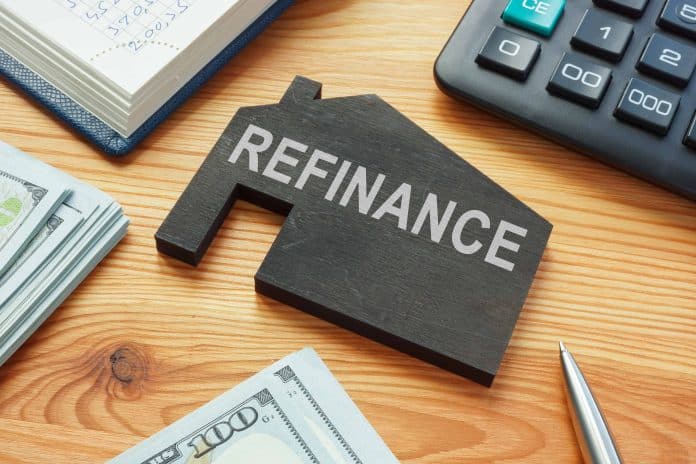
When you have a mortgage, you want to make sure that you properly manage it. One popular way that people handle their mortgage is through a refinance. Refinancing your mortgage is a great way for people to potentially save, up to, thousands on their mortgage. However, many people don’t realize how this happens and what other benefits come along with a mortgage refinance.
What is a Mortgage Refinance
When you have an existing mortgage, you have the opportunity to roll your current home loan into a new home loan. If you want to refinance your home, you will need to think back to the process of buying a house. Your home will need to go through a home inspection so that your lender can determine the value of your home. After determining the value and other requirements like checking your credit score, reviewing your equity, etc., they will provide you with refinancing opportunities. Many people don’t realize that there are a variety of different refinances available.
What are the Benefits of Refinancing Your Mortgage?
Refinancing your mortgage can come with some nice benefits! Some of the benefits that people can see when they refinance their home includes:
- Lowering Your Monthly Payment
- Having a Shorter Mortgage Term
- Changing Your Interest Rate
- Getting Cash Out of Your Home
Lowering Your Monthly Payment
One popular advantage of mortgage refinance is the fact that you can lower your monthly payment. There are different ways that you could lower your monthly payment. The first way would be that you may be able to save on your interest rate. Let’s say at the time you got your mortgage, you had an interest rate of 6%. When you refinance your mortgage, you may be able to get a lower interest rate at 3%. This could save you hundreds of dollars a month and save you thousands over the course of your loan.
Another way that you could reduce your monthly payment is by getting rid of your private mortgage insurance (PMI). Sometimes, you may be required to have PMI if you do not have at least 20% of equity in your home. However, once you have 20% equity built up from your property, you will likely be able to get rid of your PMI which can help you save every month.
Having a Shorter Mortgage Term
Another benefit of getting a mortgage refinance is getting a shorter mortgage term. When people get a mortgage, they typically choose a 30 year term. However, before that term is up, people can refinance their mortgage and choose something shorter. For example, let’s say after 8 years (when there are 22 years remaining) a person decides to refinance their property. They can choose to refinance their property for 15 years which means they shaved 7 years off from their expected mortgage term! Having a shorter mortgage means that homeowners can more quickly build equity which in turn provides a variety of different opportunities when it comes to your home.
Changing Your Interest Rate
Besides lowering your interest rate, you could also change your interest rate type. There are two main types of interest rates. There are fixed and variable interest rates. A fixed interest rate means that the interest doesn’t change during the course of the mortgage. On the other hand, there are variable interest rates which means that it can change after the set term. They typically tend to have lower interest rates at first when they are fixed but then can change month to month. Many people like stability and want to refinance their adjustable-rate mortgage (ARM) with a fixed rate. This can help people understand what their monthly payment would be and helps them create an easier to manage budget.
Getting Cash Out of Your Home
When a homeowner needs cash, they may forget that they can look to their home as a resource. Like we said earlier in this article, there are a variety of different refinances that you can consider. One option is a cash out refinance. A cash out refinance would replace your existing mortgage with a new one that is worth more than the amount you owe on the existing loan. This allows the borrower to tap into their home’s equity to get some cash. The cash that you get can be used towards anything you need. However, you want to make sure that you use it responsibly.
Are There Drawbacks of Refinancing Your Mortgage?
While it’s important to know the pros of refinancing your mortgage, you also want to be aware of some of the drawbacks. Knowing both the good and the bad about something can help you make an educated decision. Some of the drawbacks that come along with refinancing your mortgage includes:
- Closing Costs and Fees
- Longer Break-Even Point
- Underwater Loan
Closing Costs and Fees
While refinancing your mortgage can be great, it can come along with closing costs and fees that you need to deal with. Think about when you bought your home. You needed to pay for closing costs and fees when you finalized your mortgage. Refinancing your mortgage involves the same process of getting a home loan. You are just replacing your existing home loan with a new one. That means that you can expect to deal with closing costs again as well as other fees like home inspection costs.
Longer Break-Even Point
While some people choose to refinance their mortgage to shorten their mortgage term, other people choose to lengthen it. However, if you choose to extend the life of your home mortgage then it could take longer to reach your break-even point. Your break even point is the point where your accumulated savings is worth more than the amount you spend on getting the loan. However, you may find that your break even point takes longer to reach depending on the situation.
Underwater Loan
The housing market can be crazy. Think back to 2008 when the housing market crashed. If you don’t get the right refinance for your situation, then you could end up underwater on your loan. When you become underwater on your loan, that means you owe more than what the home is worth. You want to make sure that you understand the market when finalizing your loan agreement!
How to Get a Mortgage Refinance
When people think about refinancing their mortgage, it can feel confusing. Luckily, it doesn’t have to be! The process of getting a mortgage refinance is easier than you realize. You can break down the process into 5 steps:
- Create Your Goals
- Check Your Credit Score
- Review Your Options with Multiple Lenders
- Pick Your Mortgage Lender
- Begin the Closing Process
1. Create Your Goals
If you want to get a mortgage refinance, you will first want to create your goals. It’s important to have your goals in mind so that you can review your options accordingly. Think about why you are trying to get a mortgage refinance. Do you want cash out of your home? Do you want to get a lower payment? It’s important to make sure that you know your goals so that you can plan around them.
2. Check Your Credit Score
An important part of the refinancing process is your credit score. That is why you want to make sure that you know your credit score standing. That’s because lenders use your credit score to understand the risk they face when it comes to you as a borrower. You still may be able to refinance even if you have bad credit. However, a lower credit score can mean worse terms.
3. Review Your Options with Multiple Lenders
Comparison shopping is important regardless of whether you are trying to find a new doctor, you are looking to buy a specific shirt, or you want to refinance your mortgage. That’s why you want to make sure you compare lenders when it comes to refinance your mortgage. Not every lender is the same. Some can offer more benefits than others. It’s important that you find the best options available for your financial situation. Generally, if you ask for multiple quotes from lenders within 2 weeks of your first request then that will minimize the impact hard inquiries have on your credit score.
4. Pick Your Mortgage Lender
After reviewing the different lenders out there, you will want to make a decision. This is the time where you will “lock” in your rate with your lender. It’s important to keep in mind that you will want to lock in as soon as possible because mortgage rates can change every day. Some lenders provide borrowers the ability to “float down” their interest after a borrower closes. However, that option can come along with additional fees that you need to deal with.
5. Begin the Closing Process
After you lock in with your lender, it is time to start the closing process. Think of your refinance similarly to the purchase of your home. You needed to fill out paperwork, go through an approval, submit tax return information, etc. When you finalize your closing, your lender will tell you the details of where you’ll need to go, what you need to bring, and what to expect.
Overall
Refinancing your mortgage comes with a variety of different benefits. It also comes with some drawbacks that you should be aware of. However, you may benefit from considering a mortgage refinance. Keep in mind that every situation is different. If you have any questions you should get in touch with a professional. They can help provide you extra information about the process and hopefully clear everything up!




















